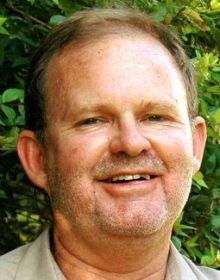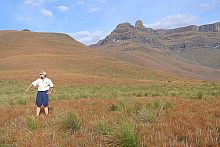SAEON’s inter-organisational collaboration and services
|
The vision of the South African Environmental Observation Network (SAEON) is to be a comprehensive, sustained, coordinated and responsive South African in situ environmental observation network that delivers long-term reliable data for scientific research and informs decision-making: for a knowledge society and improved quality of life.
When the Department of Science and Technology (DST) commenced with its support for SAEON in 2002, the understanding was that the DST would provide core funding for the establishment of nodes and a data management backbone, and that other government departments, research organisations and industry would contribute additional funds for monitoring programmes according to their own mandates.
Through the sharing of the resulting data, the aim was (and still is) to achieve economies of scale with regard to national environmental monitoring.
The opportunity therefore exists for partner organisations to collaborate with SAEON by sponsoring or outsourcing some of their environmental monitoring, research and data management, and even their education needs.
This is indeed happening:
Environmental monitoring and research
- Monitoring of Marine Protected Areas with South African National Parks (SANParks) and the World Wide Fund for Nature (WWF)
- Monitoring of harbour water quality with the South African Ports Authority
- Monitoring of estuaries and reefs with iSimangaliso Wetlands Park Authority
- Long-term monitoring in the Drakensberg funded by a grant from the National Research Foundation (NRF)
- Monitoring the success of restoration of communal land at Giyani for the Department of Environmental Affairs
- Monitoring of the Coral Triangle of the South Western Indian Ocean (SWIO) and source of the Agulhas Current with the Western Indian Ocean Marine Science Association (WIOMSA)
- Early-warning system for Benguela Current with Benguela Current Commission and African Centre for Climate and Earth System Science (ACCESS)
- ARGO observation system for the Southern Ocean with the South African National Antarctic Programme and the University of Cape Town
- Rangeland Monitoring with the Agricultural Research Council (ARC)
- Monitoring of Jonkershoek mountain catchment with the Department of Water and Environmental Affairs (pending)
- Monitoring of network of mountain catchments with the Department of Water and Environmental Affairs (pending)
- Management of the African Coelacanth Ecosystem Programme (ACEP) with the South African Institute of Aquatic Biodiversity (SAIAB)
Data management
- Development of CoGIS (Collaborative GIS) with the Council for Scientific and Industrial Research (CSIR)
- Data management with the African Coelacanth Ecosystem Programme
- Data management with the Agulhas Somali Large Marine Ecosystem programme (ASCLME)
- Data management with the Nairobi Clearinghouse Mechanism of the United Nations Environmental Programme (UNEP)
- Data management with the United States Geological Survey, National Centre for Ecological Analysis and Synthesis (NCEAS) and South African National Parks
- Development of the South African Earth Observation Strategy’s data portal with DST
Education
- Masters research programme with Murray & Roberts
- National Science Week and other awareness programmes with South African Agency for Science and Technology Advancement (SAASTA)
- School monitoring projects with a wide range of schools
- Student research projects with several universities
- Teacher exchange programme with International Institute of Education
- Ocean modelling workshop with ASCLME and START-PACOM
- Long-term monitoring training workshop with POGO-SCOR
- Global Learning and Observations for the Benefit of the Environment (GLOBE) with DST (pending)
Node Hosting
- South African Institute of Aquatic Biodiversity (SAIAB)
- SANParks
- Marine and Coastal Management (DWEA)
- South African National Biodiversity Institute (SANBI)
- Ezemvelo Kwazulu-Natal Wildlife (EKZNW)
There is scope for potential collaboration with a range of other organisations, which will be pursued in due course. One of the critical success factors is the willingness of the collaborating organisation to share data with SAEON and to make the data publicly accessible through SAEON’s web portal.
Another critical success factor is SAEON’s human resource capacity. Both these factors have already made it difficult for SAEON to pursue certain opportunities. Increasing the number of research staff will expand SAEON’s collaborative capacity.
SAEON has, however, very little direct influence on the will of potential partnering organisations to share data. Yet, widespread signs of a growing culture of data sharing in the community of Earth observers, as well as an increasing accessibility of other online data portals are encouraging developments.












